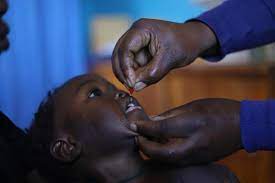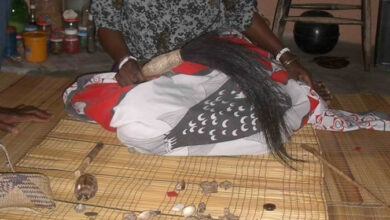Zim a global leader in immunisation: UNICEF

Despite challenges in its health care system, Zimbabwe is one of the global leaders in immunisation due to the hard work of local health workers and a functional cold chain system, a UNICEF official has said.
According to UNICEF, 99 percent of health facilities in Zimbabwe have functional cold chain equipment for the extended programme of immunisation, which was made possible through procurement and logistics support from developmental partners.
Presenting on the work UNICEF Zimbabwe has been implementing in partnership with the government at a developmental reporting workshop recently, UNICEF communications specialist Elizabeth Mupfumira confidently said the country has been able to maintain its routine immunisation despite challenges seen in the health sector.
“99 percent of health facilities in Zimbabwe have functional cold chain equipment for the extended programme of immunisation through procurement and logistics support, as you know recently the Covid-19 vaccination has really gone national – rural and urban. One of the things that has really helped to make sure that the Covid-19 vaccines go to the hardest to reach part of the country is the cold chain equipment we have managed to support the government in procuring,” she said.
“As you may know Zimbabwe is one of the leading countries when it comes to immunisation. Globally we are a real leader in terms of immunisation and again this is made possible by this cold chain equipment that is available through the government health facilities.”
Mupfuira highlighted that due to procurement of cold chain facilities from partners, health facilities had been able to participate in vaccination.
“Nationally, in most health facilities around Zimbabwe there is some sort of cold chain equipment. As an example in March this year, the Japanese government supported the procurement of 80 solar direct driven fridges, 130 standard cooler boxes, 70 ice lined vaccine fridges and these were redistributed to 200 health facilities across the country,” she said while responding to questions.
“This is an example of the latest procurement so I’m pretty confident that go to any health facility, at district level to start with, definitely you will find some cold chain equipment.”
The UNICEF communications specialist noted that other achievements around the partnership between the UN and the government had seen maternal mortality dropped from 640 per 100 000 live births in 2014 to 462 per 100 000 live births in 2021.
“This is mainly attributable to the procurement of health equipment to deliver reproductive newborn child health services and enhanced maternal death surveillance. Health facilities that were charging user fees dropped from seven percent in 2015 to two percent in 2021, courtesy of UN financial investments via the results-based financing,” Mupfumira said.
“Finally we have exceeded a target with 83 percent villages being supported by village health workers to provide integrated health prevention and HIV health services. Village health workers are really the entry point in health services in Zimbabwe.”
Mupfuira stated to produce tangible health outputs, UNICEF has been working with the government at national and sub-level to support the implementation of a national health strategy.
“This health strategy entails policy and administration, public health food and nutrition food security, preventative and curative services, biomedical science and technology and the strengthening of health systems and security,” noted the communications specialist.






